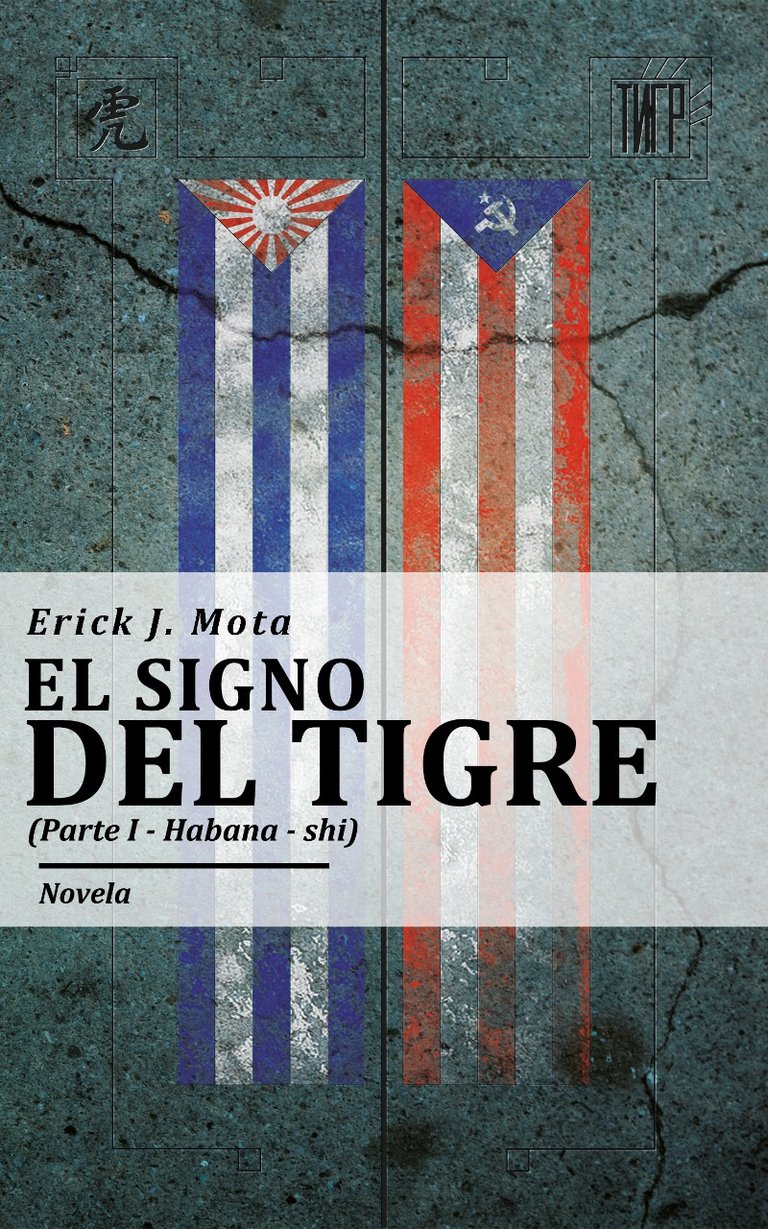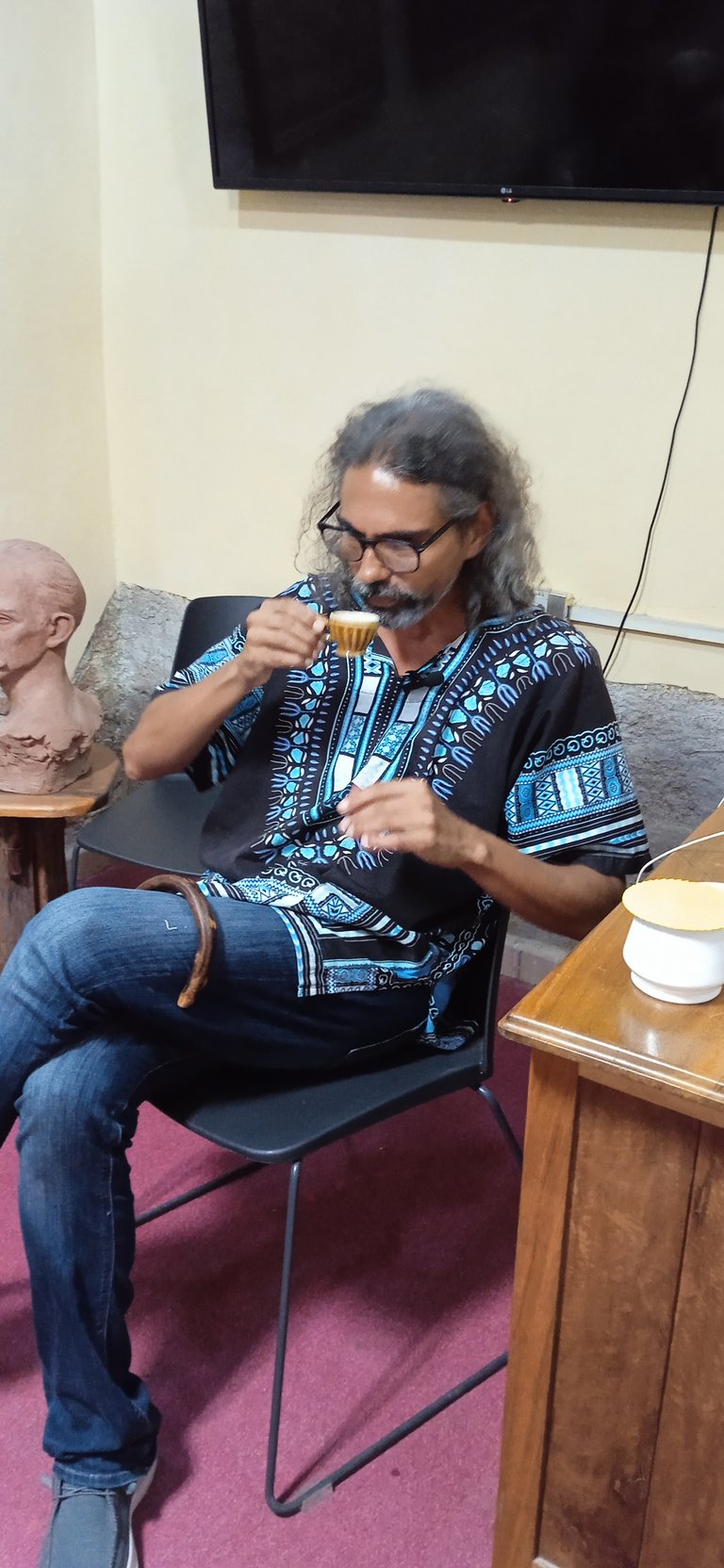Hola, amigos de la #AltaLiteratura.
Hoy llego con un libro muy apreciado para mí: El signo del tigre (parte 1 Habana - Shi).

Todo conocedor de la ciencia ficción sabe que uno de los temas más complicados de escribir son los viajes en el tiempo. Por eso, uno de los subgéneros más complejos de realizar son aquellos relacionados con esta temática; entre esos está, por supuesto, la uncronía.
Por esta razón, entre otras, me lancé de lleno a leer la novela El signo del tigre (parte 1 Habana - Shi), publicado por Luna insomne editores, 2023, de la autoría del escritor Erick J. Mota.
Desde la primera línea notamos que algo extraño sucedía en La Habana al ver un acorazado japonés en la Bahía capitalina. Esta era una Habana diferente.
De ahí en adelante, todo sería un increscendo. Erick acumula más y más información a medida que los capítulos se suceden. Sin embargo, nunca regala nada. La información no está puesta ni lógica ni cronológicamente, pero sí como la necesita el argumento. Como todo en la vida, tenemos que ir uniendo las piezas, las imágenes que ha ido colocando de tal manera que el lector esté siempre al tanto de los detalles y construya ese mundo imaginado, soñado por el autor.
Y este no es otro que un universo lleno de maravillas, tan distinto al nuestro, en apariencia, pero al mismo tiempo tan semejante, cercano. Erick J. Mota realizó una extensa investigación, no solo histórica, sino también cultural. Estudió sobre el budismo, taoísmo, la religión cristiana, católica y, sobre todo, de la cultura e idioma de Japón. Estos elementos son los pilares sobre los que construyó la nueva Habana del libro.

El signo del tigre cuenta una historia de acción, espionaje y suspense en la capital cubana, pero en una Cuba administrada y colonizada por Japón, luego que estos ganaran la segunda guerra mundial. Y no solo La Habana, también gran parte del Caribe insular y continental. Resulta maravilloso ver a esa Habana con las nuevas y más cotizadas Geishas caribeñas, ceremonias del café, rastafarismo zen, budismo del caribe, el camino de la espada, bicitaxistas con katanas, nuestros orishas y mucho más.
Las múltiples tramas van uniendo a los más disímiles personajes, de las más variadas clases sociales, a medida en que aparecen las múltiples conspiraciones que se gestan entre las islas del caribe. En el medio de ellas, una geisha caribeña, una prostituta, un hijo bastardo, células del partido comunista soviético, un bicitaxista, oficiales japoneses, el emperador de Japón, su heredero, una mujer santa y momentos claves de la historia cubana como la conocida crisis de de los misiles de octubre de 1962; todo ello se une para crear una de las más interesantes ucronías escritas en Cuba.
Sé que parece poca información sobre la novela, pero temo que de mencionar un detalle, pueda delatar algo o romper una de las tantas sorpresas, giros dramáticos o argumentales que Erick ha ido sembrando como pistas o trampas a lo largo de la novela. Solo adelantaré con lo que me quedo de El signo del tigre.
Me quedo con la caracterización, la forma en que el autor a conseguido destacar la idiosincrasia del cubano y la del japonés. Para nadie es un secreto que los de la isla del sol naciente son arduos defensores y exportadores de su cultura. Sin embargo, el cubano, a pesar de sus múltiples colonizaciones (físicas y culturales) siempre ha sido un rebelde y aún más rehacio a abandonar u olvidar quiénes somos.
Me quedo con las geishas del caribe. Hay una manera de actuar en ellas, de moverse, comportarse, donde Erick muestra a unas mujeres rebosantes de belleza, sensualidad, muy sexys tanto en el aspecto físico, como en los otros. Nada de que ver con la geishas tradicionales, sino mucho más atractivas. Al igual que la mulata, la criolla, durante la colonia española obtuvo lo mejor del español y el africano; estas ostentan lo mejor de la cultura cubana y japonesa.
Me quedo con la construcción de una trama donde, por más que pienses que sabes de qué, sobre qué o quién o cómo va a terminar el asunto, nunca vas a acercarte. La novela es como el famoso grabado de “La gran ola de Kanagawa”, con giros y giros dentro de ella.
Por último, me quedo con la ceremonia del café y la abrazo como mía. Si algo me atrapó y me impidió soltar el libro fue ese capítulo donde se describe meticulosamente esta nueva e importante tradición. El autor no explica nada o casi nada del nuevo orden mundial, sino que lo va mostrando a pinceladas donde el matiz depende de aquello que esté ocurriendo. No obstante, con la ceremonia del café puso un chotto matte kudasai (un momento, por favor) y nos mostró el lienzo completo donde se ilustra esta maravilla.

hasta el propio autor disfruta de esta ceremonia mientras imparte sus conferencias
Punto aparte merece la imagen de cubierta. Solo con esa excelente imagen de las banderas cubanas y puertoriqueñas alternativas, uno comienza a pensar en ese “esto está raro cantidad, pero parece estar muy bueno”. Una mala cubierta puede influir positiva o negativamente en la compra de un libro. La imagen de cubierta, es otro de los atractivos de esta novela. No me la imagino con una mejor o diferente.
Erick J. Mota, de forma muy sutil muestra muchas de las aristas del cubano, del caribeño, dee esa mezcla multicultural que nos caracteriza: y juega con ellas. Ya sean las creencias, las religiones, los mestizajes que vivimos y practicamos a diario en todos los aspectos de nuestra vida. De hecho, es algo que hemos hecho desde 1942 hasta el momento y dudo que dejemos de hacerlo. A partir de este aspecto, el autor teoriza, nos muestra su hipótesis de cómo esta cualidad de “mestizar” puede ser un ente contaminante para el colonizador; quien es, en parte, colonizado culturalmente también.
El signo del trigre es una novela corta (la primera parte de tres planificadas según Erick J. Mota), pero que se hace aún más corta de leer por lo atractivo de la mezcla de varias historias interesantes, enredadas y de mucha acción, con una Cuba alternativa, ucrónica, pero que sigue siendo la Cuba nuestra de toda una vida. En su lectura vamos a descubrir los trazos de esa Cuba de antes, de ahora, la posible y esa que será siempre la Cuba nuestra que conocemos.
English version
Hello, friends of #HighLiterature.
Today I arrive with a book very dear to my heart: The Sign of the Tiger (Part 1 Havana - Shi).

Every science fiction connoisseur knows that one of the most complicated topics to write about is time travel. Therefore, one of the most complex subgenres to create are those related to this subject; among them, of course, unchronicity.
For this reason, among others, I threw myself into reading the novel The Sign of the Tiger (Part 1 Havana - Shi), published by Luna Insomne Editores, 2023, by writer Erick J. Mota.
From the first line, we noticed that something strange was happening in Havana when we saw a Japanese battleship in Havana Bay. This was a different Havana.
From then on, everything crescendoed. Erick accumulates more and more information as the chapters unfold. However, he never gives anything away. The information is neither logically nor chronologically arranged, but as the plot requires. Like everything in life, we have to put the pieces together, the images he's been placing in such a way that the reader is always aware of the details and constructs that imagined world dreamed up by the author.
And this is none other than a universe full of wonders, so different from ours, in appearance, but at the same time so similar, so close. Erick J. Mota conducted extensive research, not only historical but also cultural. He studied Buddhism, Taoism, Christianity, Catholicism, and, above all, the culture and language of Japan. These elements are the pillars upon which he built the new Havana in the book.

The Sign of the Tiger tells a story of action, espionage, and suspense in the Cuban capital, but in a Cuba administered and colonized by Japan after they won World War II. And not just Havana, but also much of the insular and continental Caribbean. It's wonderful to see Havana with the new and most sought-after Caribbean Geishas, coffee ceremonies, Zen Rastafarianism, Caribbean Buddhism, the Way of the Sword, pedicab drivers with katanas, our Orishas, and much more.
The multiple plots unite the most diverse characters, from the most varied social classes, as the multiple conspiracies brewing among the Caribbean islands emerge. Among them are a Caribbean geisha, a prostitute, an illegitimate son, Soviet Communist Party cells, a bicycle taxi driver, Japanese officials, the Emperor of Japan, his heir, a saintly woman, and key moments in Cuban history such as the notorious Cuban missile crisis of October 1962; all of this comes together to create one of the most interesting alternate history stories written in Cuba.
I know this seems like little information about the novel, but I fear that mentioning a single detail might give something away or spoil one of the many surprises, dramatic twists, or plot twists that Erick has planted as clues or traps throughout the novel. I'll only share what I'm left with from The Sign of the Tiger.
I'm impressed by the characterization, the way the author has managed to highlight the idiosyncrasies of the Cuban and the Japanese. It's no secret that those from the island of the rising sun are staunch defenders and exporters of their culture. However, Cubans, despite their multiple colonizations (physical and cultural), have always been rebels and even more reluctant to abandon or forget who they are.
I'm impressed by the geishas of the Caribbean. They have a way of acting, of moving, of behaving, where Erick shows women brimming with beauty, sensuality, very sexy both physically and otherwise. They have nothing to do with traditional geishas, but are much more attractive. Like the mulatto, the Creole, during the Spanish colonial period, acquired the best of Spanish and African culture; these women display the best of Cuban and Japanese culture. I'm left with the construction of a plot where, no matter how much you think you know what, about what, who, or how the story will end, you'll never get close. The novel is like the famous print of "The Great Wave off Kanagawa," with twists and turns within it.
Finally, I'm left with the coffee ceremony and embrace it as my own. If anything captivated me and kept me from putting the book down, it was that chapter where this new and important tradition is meticulously described. The author doesn't explain anything, or almost nothing, about the new world order, but rather shows it in brushstrokes, the nuances of which depend on what's happening. However, with the coffee ceremony, he added a chotto matte kudasai (just a moment, please) and showed us the full canvas where this marvel is illustrated.

even himself enjoys this ceremony while giving his lectures
The cover image deserves a special mention. Just with that excellent image of the alternative Cuban and Puerto Rican flags, one begins to think, "This is really weird, but it looks really good." A bad cover can positively or negatively influence the purchase of a book. The cover image is another of this novel's attractions. I can't imagine it with a better or different one.
Erick J. Mota, in a very subtle way, shows many of the facets of the Cuban, the Caribbean, of that multicultural mix that characterizes us: and he plays with them. Be it beliefs, religions, or the interbreeding we experience and practice daily in all aspects of our lives. In fact, it's something we've done since 1942 until now, and I doubt we'll ever stop. From this perspective, the author theorizes, showing us his hypothesis of how this quality of "mixing" can be a contaminating element for the colonizer; who is, in part, culturally colonized as well.
The Sign of the Tiger is a short novel (the first of three planned by Erick J. Mota), but it's made even shorter by the compelling interweaving of several interesting, intertwined, and action-packed stories, with an alternative, uchronic Cuba, which remains the Cuba of our lifetime. In reading it, we will discover the traces of that Cuba of the past, of today, the possible, and that which will always be the Cuba we know.